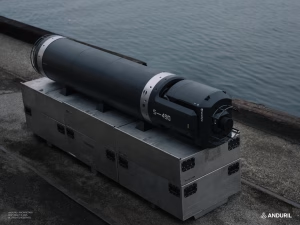While Sens. Roger Wicker (R-Miss.) and Deb Fischer (R-Neb.) are pulling for President Donald Trump’s “Golden Dome” missile defense against nuclear adversaries, others are saying it is not cost effective.
“We need to protect the homeland from as many dangers as are out there,” Wicker told sister publication The Exchange Monitor
on Wednesday.
The Golden Dome was originally dubbed “Iron Dome for America,” after Israel’s Iron Dome defense system, in an executive order by Trump in January. The executive order stated that the Dome is intended to defend against hypersonic, cruise and nuclear-armed ballistic missile threats and a “countervalue attack by nuclear adversaries.”
While similar in name to Israel’s defense system, the Golden Dome bears more similarities to former President Ronald Reagan’s “Star Wars” initiative, which was never realized but would have fielded a space-based missile defense system as well.
Fischer, at a webinar for the Washington-based conservative think tank Heritage Foundation on the defense system, gave full support to the Golden Dome, saying, “missile defense works.”
“The world has grown more complex in the last 20 years,” Fischer said. “We cannot allow an adversary to believe they can cripple the United States or that they can deter us from engaging the world to defend ourselves, our interests and our allies.”
She added that “a modern robust missile architecture like the Golden Dome should make our adversaries doubt that such an attack would be successful.”
Sen. Mark Kelly (D-Ariz.), a member of the Senate Armed Services Strategic Forces subcommittee, expressed concerns over the “Golden Dome” in a hearing with Air Force Gen. Anthony Cotton, Commander of the Strategic Command, in March.
Kelly said that while Cotton was focused on the two nuclear peers, referring to Russia and China, Kelly expressed concern over “the third one,” which he said was North Korea.
“Nuclear deterrence keeps us safe,” Kelly said, but “I think it’s fair to say that most of the time, with our nuclear peers, we’re dealing with rational actors. We hope that’s the case. That’s the thing, that part of nuclear deterrence, that they will act rationally. Not so sure that’s the case with the DPRK [Democratic People’s Republic of Korea].”
Kelly added that North Korea is “building more nuclear weapons, they’re working on other systems to deliver them, and they can now range into the United States.” His concern, he said, was that building a missile defense system “could accelerate a growing number, our adversaries response to having a missile defense system could be to build more nuclear weapons. And if one or two get through, that is too many.”
In an article March 25, the Washington-based Arms Control Association (ACA) called the Golden Dome “misguided” with “enormous opportunity costs.”
“The fundamental problem with any plan for a national missile defense system against strategic nuclear attack is that cost-exchange ratios favor the offense and U.S. adversaries can always choose to build up or diversify their strategic forces to overwhelm a potential shield,” ACA said, agreeing with Kelly. “The fantasy of a missile shield runs against a core rule of strategic competition: the enemy always gets a vote.”
ACA added that if the second Trump administration wants to “pursue a maximalist vision of a ‘Golden Dome’ to offer a mirage of strategic defense for the homeland,” any stated goal of engaging Russia and China denuclearization talks will be difficult.
“Russia has made clear in previous rounds of nuclear arms control talks that it considers strategic missile defense to be highly destabilizing to the U.S.-Russian nuclear balance of terror,” ACA said.
In response to these dove-ish arguments, Wicker told the Monitor that, “these are the same arguments that have been made for decades and I reject that.”
“The concept of an Iron Dome for America is actually even more vital given the space capabilities of our adversaries are quickly developing,” Wicker said.









